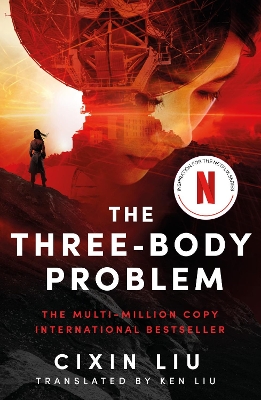Reviewed by Michael @ Knowledge Lost on
The Cultural Revolution makes for an interesting backdrop for this novel and I feel an understanding is essential to the story. The Cultural Revolution was a social-political movement that was set in motion by Chairman Mao to transform The People’s Republic of China into the true Communist ideal. This was a cultural purging to remove all remnants of capitalism and to some extent even getting rid of some of China’s traditional elements. The movement ran from 1966 to 1976, although Chairman Mao did declare it over in 1969, but the Red Guard were still very active in their mission all the way till the death of their military leader Lin Biao.
This was also during the height of the space race, Sputnik was the first artificial satellite to be launched into space in 1957, giving the Soviet Union an early lead. The China National Space Administration (CNSA) is believed to have begun in the late 1950s, although their research into rockets were more focused on a ballistic missile program to help defend the country against the Americans and Soviets during the cold war. However China was still interested in space exploration and their first spacecraft to hold human occupancy, Shuguang-1, was designed in 1968.
Now, a three-body problem in physics, is a scientific process where you take initial data sets (position, masses, velocities, etc.) and determine the motion of the three bodies with the help of the laws of classical mechanics, such as Newton’s laws of motion. Historically the three specific bodies being studied were the Moon, the Earth and the Sun. This ties the title of the novel back to the space race and also predicting the world found in the game The Three-Body Problem. However this is only the beginning of trying to understand the workings of this novel and I have not even touched on the philosophical or social criticism aspects of The Three-Body Problem.
The Three-Body Problem by Liu Cixin won the Hugo award recently for ‘Best Novel’ and I found it to be an intriguing plot idea. I knew I had to read this, and I went in expecting something similar to Russian science fiction, where there was a lot of social commentary of what was happening within Communist China. This novel did not disappoint, I would compare this to the Russian first contact novel Roadside Picnic in the way it explored social and scientific ideals but then the philosophical elements remind me of the old sci-fi novels from the 1960s.
Special mention needs to be made to Ken Liu who did an excellent job of translating this book into English. I found myself looking forward to reading all his translation notes which explains historical and cultural references that Westerners like myself may not have known about. I also appreciate that he did not try to convert the narrative to a more accessible format but allowed outsiders a taste in the narrative structure found in Chinese books. I was really impressed with the first book in the Remembrance of Earth’s Past trilogy and I would like to think I would read the rest of the series, but I know what I am like when it comes to finishing a series.
This review originally appeared on my blog; http://www.knowledgelost.org/book-reviews/genre/sci-fi/the-three-body-problem-by-liu-cixin/
Reading updates
- Started reading
- 17 September, 2015: Finished reading
- 17 September, 2015: Reviewed
